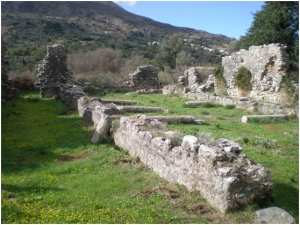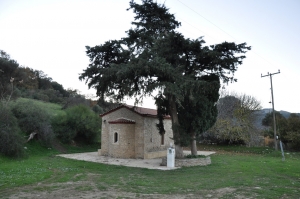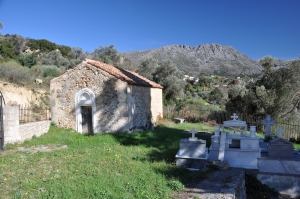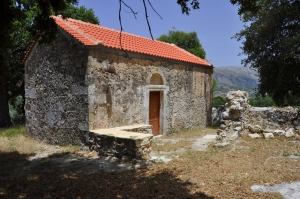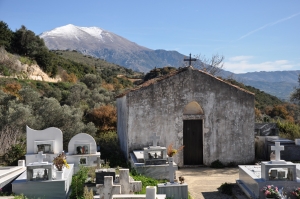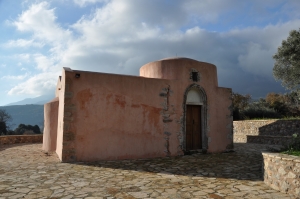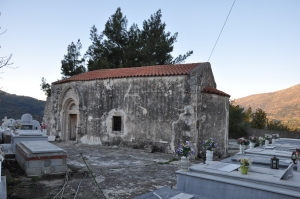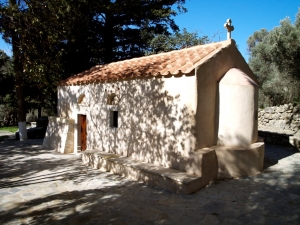The Early Christian Basilica of Vizari, known locally as Rimokklisa (deserted Church) was excavated in 1956 by K. Kalokyris. It was a three-aisled basilica with dimensions 34mx17m. The temple was floored with clay plates and was built in the 6th century, rebuilt in the 7th-8th century and eventually destroyed in 824 by the Arabs.
The church of Panagia (Our Lady) Petraida or Petradia was the temple of a small monastery that operated here in the 16th century, possibly as a dependency of the monastery of Asomati. The only surviving element of the monastery is located above the entrance, which bears the date 1843 and the name of monk Joseph who was an abbot in 1860.
The cemeterial church of St. Onoufrios is located within walking distance from the village Genna. It bears frescoes of the 14th century in relatively good condition.
The deserted today settlement Spatharika is located east of the village Apostoli at Province Amari and its main church was Saint Spyridon. This church, unlike the buildings of the village that are now collapsed, survives and bears 15th century frescoes in fair condition.
The cemeterial temple of Kalogeros, Amari province, is dedicated to Agia Marina and bears frescoes of 1225.
The church of Panagia Mavridiani is located at position Sohora by Meronas village. It is a double aisled basilica dedicated to the Birth of Virgin Mary and Saints Constantine and Helen. The south aisle dates back from the 13th century, while the second was added in the 16th century. The walls bear some traces of frescoes, mainly dating back from the 15th century.
In the center of the village Opsigias we meet the cemeterial church of St. George, which has a very interesting doorway. The temple dates back from the 15th century and bears traces of frescoes.
The church of Panagia Kardiotissa is located at position Livada or Arkolio, south of Fourfouras, and operated as a small nunnery. Today we see the temple devoted to Birth of the Virgin and there are some traces and from the nun cells. The interior of the church bears traces of frescoes of the 15th century, of which stand out the depictions of Saint George and the Second Coming.











